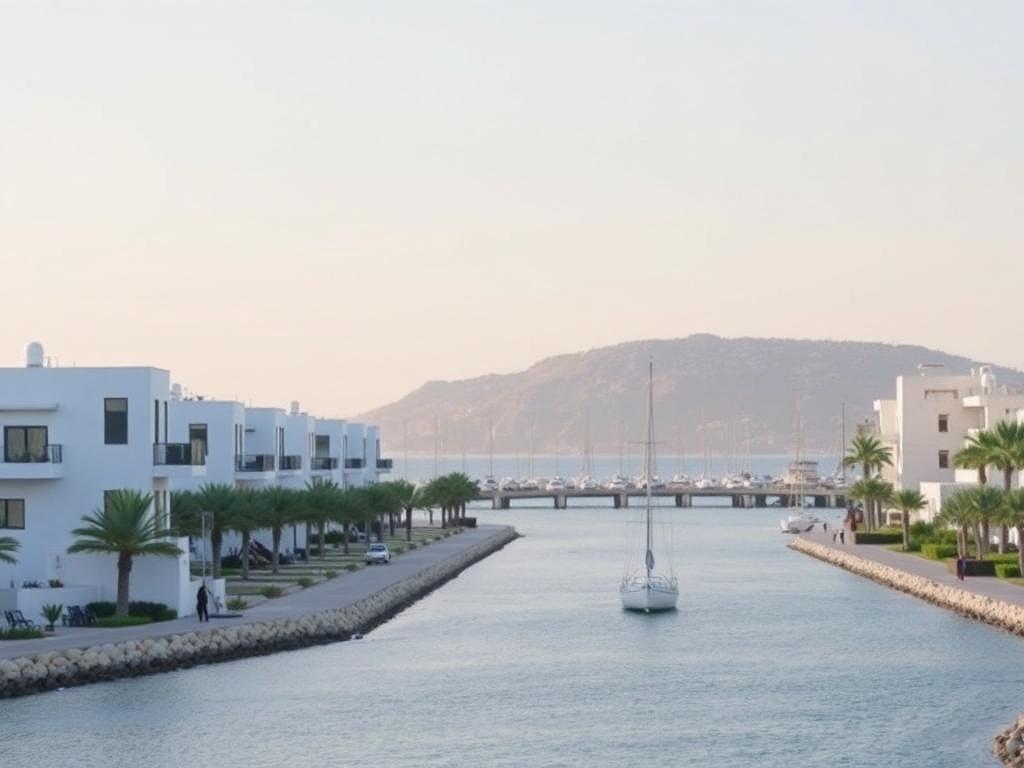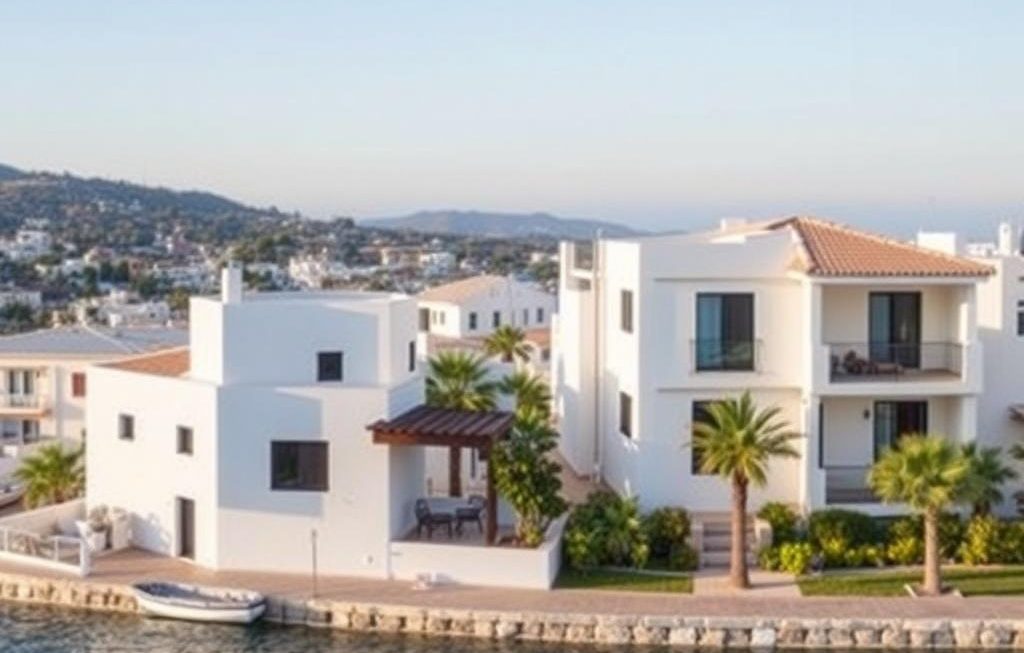The Cyprus property market is undergoing dynamic changes as we step into 2025, and two cities stand out for real estate investors eyeing residential incomes: Paphos and Limassol. If you are considering a property for sale in Paphos, understanding how rental yields in Paphos stack up against Limassol is crucial. Rental yields represent the income return from renting a property, expressed as a percentage of the property’s value, and in Cyprus, they have become a focal point in decisions about where to invest in buy-to-let properties.
Both cities have unique characteristics influencing their rental markets and investment potential. This article dives into the details of rental yields in these hubs, unpacks the factors shaping the Cyprus rental return in 2025, and provides a roadmap for those looking to invest in Cyprus buy-to-let properties. Exploring the nuances between Paphos and Limassol can guide savvy buyers in making informed property decisions amid evolving market conditions.
Overview of the 2025 Property Market Cyprus: Economic and Demographic Context
The wider economic environment and population trends present the foundation for rental returns. Cyprus’s economy has shown resilience post-pandemic, aided by tourism, services, and foreign investment inflows. Both Paphos and Limassol benefit but to different extents based on their economic profiles.
Limassol, traditionally the island’s business and port hub, enjoys a growing population driven by corporate expansions, particularly in finance, shipping, and technology sectors. This economic diversity sustains a steady demand for rental accommodation, notably among expatriate professionals and affluent locals.
Paphos, by contrast, leans more heavily on tourism and retirement residents. Its scenic coastline and heritage sites attract seasonal visitors and long-term retirees, which leads to a rental market with considerable fluctuations aligned with tourism cycles.
Economic profiles and population composition make Limassol and Paphos distinctly different rental markets despite their shared Cypriot identity.
Rental Yields in Paphos: Key Trends in 2025
Paphos rental yields in 2025 remain competitive, largely due to its mix of holiday rental demand and a growing interest from expats seeking peaceful retirement spots. Current data from local agencies show gross rental yields in the range of 5.5% to 7%. These yields come primarily from short-term rentals during peak tourist seasons, with some year-round renting possibilities in residential neighborhoods.
Recent years have also seen developments focusing on modern residential complexes catering to middle-income families, which moderately stabilize rental income. However, the short-term nature of much rental activity introduces variability, and investors should anticipate seasonal shifts impacting overall profitability.
The affordability of properties plays a major role here: the average purchase price per square meter in Paphos remains below that of Limassol, meaning investors can acquire property at a lower capital outlay. This translates into more attractive upfront costs and potentially higher relative returns for some types of rental property.
Factors Influencing Rental Yields in Paphos
Several driving factors affect the rental yields in Paphos:
- Tourism Seasonality: High occupancy during spring to autumn inflates yields temporarily but drops off in winter.
- Type of Rental: Short-term tourist rentals generate higher weekly returns; long-term rentals offer steadier but generally lower income.
- Property Location: Coastal and central areas command premium rents compared to inland villages.
- Property Condition: Well-maintained, modern properties tend to attract higher rent.
The cyclical nature of tourism in Paphos creates an interesting challenge: striking balance between peak-season gains and off-season lulls.
Rental Yields Limassol: Trends and Outlook in 2025
Limassol presents a different rental yield profile characterized by stability born from its diversified economy. The rental market here benefits from continuous demand by skilled workers, corporate tenants, and international residents. This pushes gross rental yields into the 4.5% to 6% range, which, although slightly lower than some Paphos yields, reflects less volatility and a more dependable income stream.
Limassol’s property values tend to be higher than Paphos, sometimes doubling per square meter prices, especially in areas near the marina and city center. This correlates with lower but steadier rental yields since rents adjust less dramatically than property prices. Importantly, Limassol’s investment market shows strong interest in premium apartments and villas, attracting high-net-worth renters.
Elements Affecting Rental Yields in Limassol
Several elements shape Limassol’s yields:
- Corporate Demand: A significant portion of renters are professionals attached to multinational companies, seeking reliable, long-term housing.
- Luxury Market Growth: Rising demand for upscale residences pushes prices up but rents follow with a lag.
- Infrastructure Developments: Improved transport and amenities enhance rental appeal over time.
- Regulatory Factors: Rental laws and tax policies influence investor behavior and returns.
The balance between capital appreciation and rental income is a key consideration for buy-to-let investors in Limassol, where property prices have demonstrated strong upward trajectories.
Limassol’s steady demand and premium market segment offer less yield volatility but at a higher entry cost for landlords.
Comparative Analysis: Rental Yields Paphos vs Rental Yields Limassol
Direct comparisons between rental yields in Paphos and Limassol highlight contrasting investment propositions. Let’s outline the critical metrics:
| Metric | Paphos | Limassol |
|---|---|---|
| Gross Rental Yield | 5.5% – 7% | 4.5% – 6% |
| Average Property Price (€/m²) | ~1,500–2,000 | ~3,000–4,500 |
| Market Volatility | Seasonal, higher fluctuation | Stable, lower fluctuation |
| Main Tenant Types | Tourists, retirees | Corporate professionals, expatriates |
| Investment Entry Cost | Lower | Higher |
From the table, it’s evident that investors prioritizing higher gross yields with an acceptance of seasonal variability might lean towards Paphos. Those favoring stable income streams and a more predictable tenant profile would find Limassol appealing, albeit at a higher capital investment.
Long-Term Prospects and Risks in Both Markets
Forecasts for the 2025 property market Cyprus indicate steady price appreciation in both cities, though driven by different forces. Paphos may benefit from renewed tourism investment and infrastructure upgrades, potentially raising year-round rental demand. Limassol’s growth is tied closely to corporate expansion and international business sectors, creating resilience but also exposure to global economic shifts.
Risks include regulatory changes impacting buy-to-let taxation, possible slowdown in foreign investment, and fluctuating currency conditions. Moreover, the post-pandemic recovery trajectory still influences tourism-dependent areas more heavily than economic-business hubs.
Choosing between Paphos and Limassol hinges on investor tolerance for market cycles versus capital commitment, mapping closely to personal investment goals.
How to Maximize Cyprus Rental Return in 2025: Strategic Tips
Regardless of location, several strategies enhance rental returns in Cyprus:
- Targeted Property Selection: Prioritize locations known for consistent rental demand within your city of choice.
- Property Condition and Amenities: Modern upgrades and appealing facilities increase rentability and premium returns.
- Legal and Tax Expertise: Navigate Cyprus’s regulations with professional advice to optimize net yields.
- Marketing Approach: Utilize digital platforms for short-term rentals and specialized channels for corporate housing.
- Diversify Rental Types: Blend short-term and long-term leases to smooth income variations.
Investing in Cyprus buy-to-let requires awareness of market nuances, landlord responsibilities, and tenant expectations. Whether you’re leaning towards Paphos’s charm or Limassol’s vibrancy, aligning your strategy with local rental dynamics is key.
Smart investment is about leveraging local market conditions to generate consistent and maximized rental income.
Which City Suits Your Investment Goals: Paphos or Limassol?
If you seek higher initial rental yields and can manage seasonal income flows, Paphos provides an accessible investment entry point. It appeals especially to those focused on holiday rentals and retirees wanting to capitalize on Cyprus’s climate and lifestyle.
Limassol fits investors aiming at long-term capital growth combined with steady rental income from a robust professional tenant base. The higher property prices here require more upfront capital but offer a more cushioned investment against short-term tourism shocks.
Ultimately, your choice depends on whether you prioritize immediate rental yield or asset appreciation alongside income stability. Both cities hold potential but serve different investor profiles and risk appetites. Keeping abreast of the 2025 property market Cyprus trends will be vital to making a sound decision.
Your investment success in Cyprus hinges on selecting the city that matches your rental income expectations and risk tolerance.
Final Reflections: Crafting Your Cyprus Rental Strategy in 2025
Exploring rental yields in Paphos and Limassol reveals the story of two markets shaped by their distinct economic engines and demographic seas. Paphos offers attractive yields entwined with tourism’s ebb and flow. Limassol trades on a robust, professional rental market delivering steadier returns with a higher cost of entry.
In the evolving 2025 property market Cyprus, investors must weigh these trade-offs within the context of their financial goals and lifestyle visions. Balancing rental income stability against capital appreciation prospects requires a blend of market insight, financial planning, and sometimes a bit of local know-how.
For those ready to take the plunge, a thorough understanding of rental yields — Paphos versus Limassol — sharpens your buying strategy and ultimately defines your success in Cyprus’s intriguing real estate landscape.
Each city offers a distinct avenue to rental income; your path depends on how you interpret the rhythm of Cyprus’s 2025 market.
Frequently Asked Questions
- What is the average rental yield for properties in Paphos in 2025?
Rental yields in Paphos currently range between 5.5% and 7%, influenced by seasonal tourism. - How do rental yields in Limassol differ from those in Paphos?
Limassol yields typically range from 4.5% to 6%, lower but more stable due to a steady professional tenant base. - Is it better to invest in short-term or long-term rentals in Cyprus?
Short-term rentals may yield higher returns seasonally; long-term rentals offer more consistent income, so a mix often works best. - What factors affect rental yields in the Cyprus property market?
Key factors include location, property type and condition, tenant demand, and broader economic conditions. - Can foreign investors easily invest in Cyprus buy-to-let properties?
Yes, Cyprus permits foreign investment with straightforward property purchasing processes and attractive residency options. - How does the cost of property impact rental yields in Paphos and Limassol?
Lower property prices in Paphos often translate into higher gross yields, whereas higher prices in Limassol produce stable but lower yield percentages. - What should new investors consider when entering the 2025 property market Cyprus?
Understanding local rental demand, market volatility, tax regulations, and matching investment goals with city profiles is crucial.



